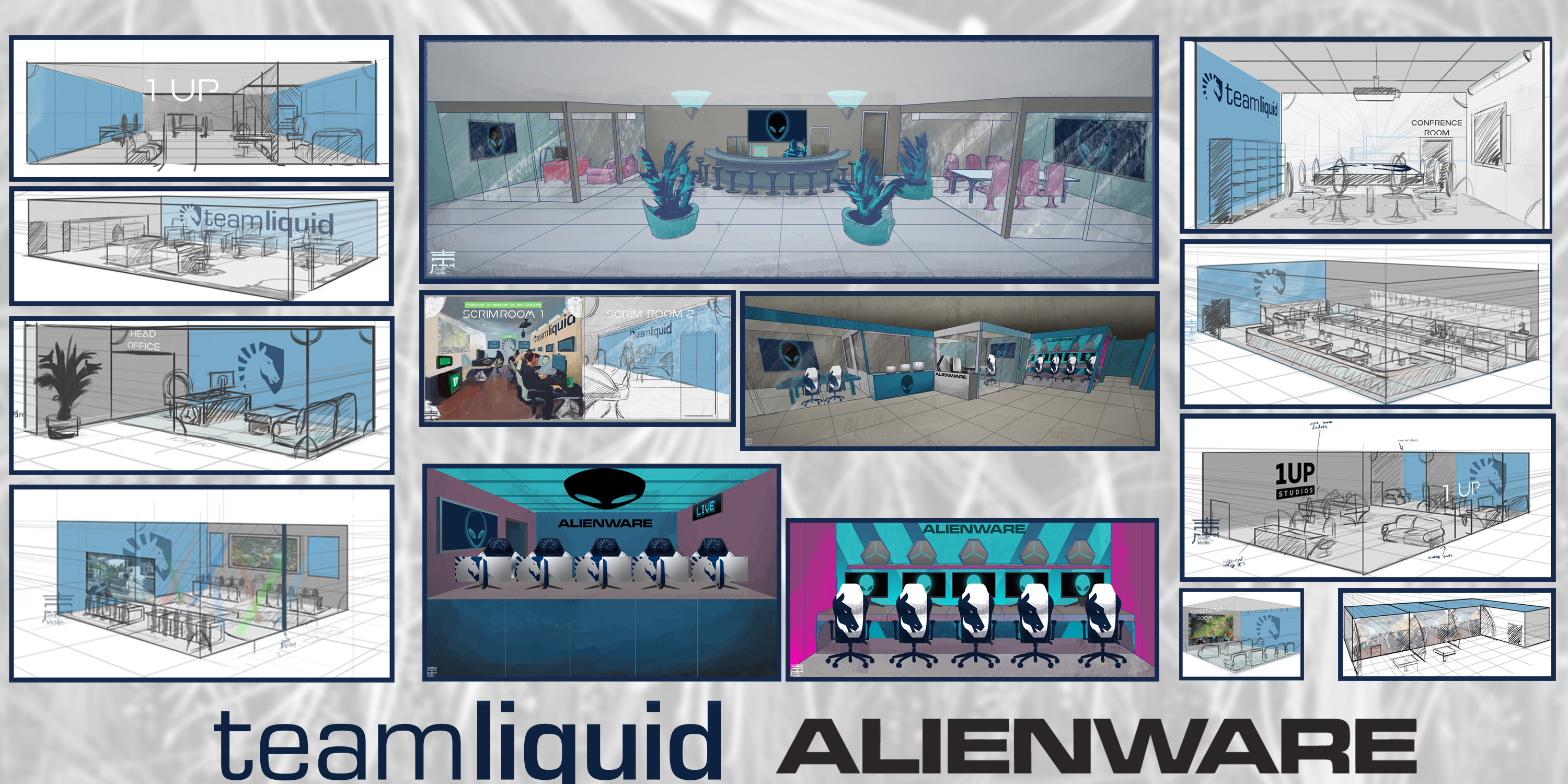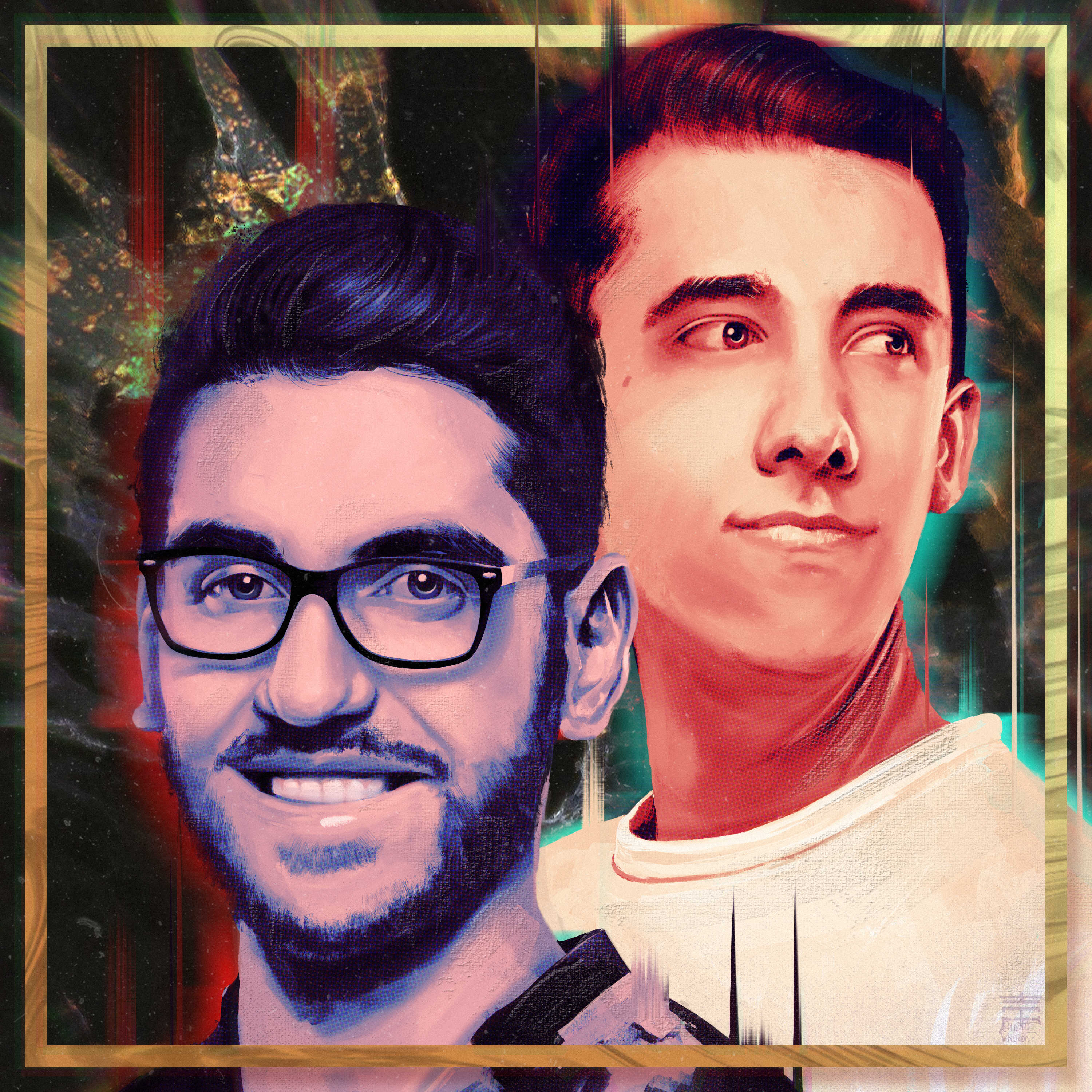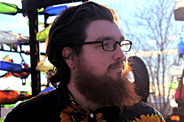
Justin Wharton has entered a new chapter of his artistic career. The self-proclaimed illustrator and apparel design got his start in the Super Smash Bros. Melee scene with his vaporwave artworks of professional players and characters, and eventually, gained more acclaim in both Melee and Super Smash Bros. Ultimate for his landscape paintings of the in-game stages and merchandise designs before finding a home in esports as the Merchandise Coordinator for Panda Global.
Justin Wharton spoke to Inven Global's Nick Geracie earlier this summer to recall how his path as a career artist intersected with esports and to discuss the unique challenges a professional artist faces in the gaming industry.
Let's start off with the basics: How did you become an artist, and how did you enter the Smash community?
Thanks for taking the time to do this interview! By trade, I am a portrait painter. That's what I trained myself to do and to learn it was my goal. I started doing art when I was very young, and started taking it seriously as a freshman.
Before that, I didn't realize I could actually turn this into a job, and that technology was advancing to the point to where I didn't need to run the ropes the way my old mentor showed me and told me that I had to.
In senior year of high school, I started getting really into Super Smash Bros. Melee. Before then I was really into MOBAs, specifically League of Legends, and I found that it was not very healthy for me. It was starting to affect my mental. Things weren't good, and when I started noticing what almost seemed like an addiction, I cut ties really fast and picked up a game that I could play for ten minutes and then stop. That game was Melee.
I watched competitive Melee at Apex 2014, and I saw one of Evil Geniuses' Kevin "PPMD" Nanney's sets. When I saw that set it clicked in my head that this game was awesome. It clicked for me that two people could play a game to this level where they're mentally 10 steps ahead of one another, and I wanted to be able to do that because of how cool it looked. To this day, I still can't do that in Melee, I'm actually really bad. *Laughs* It was a spectacle in the purest form of esports for me.
From my perspective, watching competitive League of Legends without playing the game, or at least understanding the basics of it, makes it really hard to follow. However, something about Melee is so raw that it's able to translate at any level in terms of watchability. That's what happened with me getting into Super Smash Bros. Melee — started painting portraits of professional players.
I painted Cloud9's Joseph "Mang0" Marquez first, and then I moved on to do the rest of The Five Gods, and after that, TSM's William "Leffen" Hjelte. After that, I moved onto doing some designs and got the opportunity to put some of my art in The Big House. I didn't attend The Big House 4, but my work was put in the online shop and I did alright.
Bobby "Scar" Scarnewman and Kris "Toph" Aldenderfer helped me a lot and still do to this day; I love them. They helped me get through some pretty hard times when I was working at a tire factory as a day job. I did a vaporwave painting shortly after, and that's what started the wave I rode for a long time before finding new outlets.

I used to get absolutely shredded when I used to post my art to online message boards. However, I felt this was the way I needed to improve, which I don't recommend at all. *laughs* Honestly, I had it in my head that the harshest criticism I could receive was also the best criticism, which is wrong. I don't recommend that to people in hindsight.
I started posting my art in the Melee Hell group on Facebook, because I figured that they couldn't say anything to me that hadn't already been said. The response was completely the opposite, and it almost became a cult following. I still post all my art in Melee Hell, and I still love a good chunk of that community. There's plenty of trolls, too, but if you know how to divert their attempts then you can gain the type of respect that Melee Hell has been built upon.
Within a span of two months, I painted all 25 of the Super Smash Bros. Melee characters. To this day, I still don't know what kind of fever dream I was in — I don't know how I did it. I've never worked that hard, and that amount of work was crazy.
I was growing during that time and went to my first event, which was Genesis 4, and I did surprisingly well. I went to my dad and told him this could potentially be a career for me instead of slinging tires. I was going through college at the time too for a Business degree, which was also helped me in my own personal life in terms of financing and whatnot. That was the first step into this new world.
Sometimes I wish I could go back to being an outside observer in Melee — don't meet your heroes and all that junk *laughs* — but Melee is so big and so cool. It's a big pond, and when I was getting into the scene, a few big artists like Tom "Moxie2D" Skender started working for a music label and only recently came back to creating art in the scene. Jacqueline "Jisu" Choe has taken a hiatus, and some other artists have grown into the spaces left in the Melee community.
It sounds like the Melee art community is big but closely knit at the top, but the Super Smash Bros Ultimate community is a whole separate realm with a lot of new members who maybe weren't around for the early days of the Melee community's development. How do you have to change your approach to creating in a newer scene than Melee like Smash Ultimate?
The Ultimate community has welcomed me with open arms. I self-published a book of art with all of the characters on the Smash Ultimate roster.
That's so many more characters than in Melee!
*Laughs* Yeah, I thought about that, but it's kind of a natural progression from my work in Melee. Other games like League of Legends can be hard. The secret is staying passionate as well as understanding you're not going to always hit the niche. I'm very fortunate to have a larger following now than I did previously, so it's easier for me to punch through to these communities.
For example, Riot Games retweeted some fan art I did of Lucian and Garen in their Demacia Vice skins. I would not have gotten that kind of support without first having developed a following in the Smash scene.
I would now consider myself an illustrator and an apparel designer by trade. Scar and Toph had previously asked me to do some designs that were just graphics on tees, and then I got picked up by an organization called Thunder Gaming and did an entire apparel line of cut-and-sew clothing.
It's funny how things have naturally evolved that way, but I've also probably done work that you've never seen. For example, I designed Team Liquid's Alienware Training Facility. I was the initial industrial designer TL brought on, and I did a lot of sketches to help bring the creation to life.

Not a lot of people know I did that, and it's still one of the craziest things to happen in my career. Things had fallen through with someone else, and I had about four days to turn something over, but when push came to shove, I was able to do it. It's really fun doing those oddball things because my fundamentals as an illustrator have helped me pull through in those situations.
In gaming and esports, people often wear many hats and boast multiple skills. Is this something you have been trying to do in establishing yourself as an illustrator with the paintings of the Smash stages?
Initially, I wanted to be a map painter for movies. I was really inspired by Dreamworks' How To Train Your Dragon growing up. For those who don't know, a map painting is a very beautiful done painting in the background that multiple layers are built on top of to give the simulation of movement. I wanted to be able to do that, and it was always something I dreamed of, though I don't have an art degree.
I was self-taught for a lot of my career, so it's really hard to get into those kinds of jobs when you don't have the background in movies, don't know certain people you have to know, etc. The stage paintings were built off of my love for map paintings and painting landscapes. I still love to paint these types of pieces, it just takes a very long time. I'm working on a Hyrule Temple one right now, and it's been going very slowly.
One part of map painting is something called photo bashing. I take photos and manipulate them, which is very different from my other design work, but it is actually an industry standard. You save hours and hours, it's insane, but it's a crutch that you can't lean on as an artist. You still have to know your fundamentals to even be able to use photo bashing properly.
The stage paintings were kind of my second breath in the Melee community, but I'm not saying vaporwave is dead. I still love vaporwave and I will probably be making vaporwave until I'm 80 or something if I live that long.

That being said, it felt like the Melee community had moved on, and I didn't want to be a one-trick pony. I wanted to paint Dream Land N64 since I had a background in map paintings; it blew up and people liked it so much that a lot of them didn't even know about my vaporwave art. That was really crazy to me, and it really motivated me to continue to create more, and that ended up being my second breath in the Melee community.
In your opinion, what role does the artist play in a closely-knit, competitive gaming community like the one built around Melee?
I think a lot of old Fighting Game Community groups understand, such as the Street Fighter community. They understand it helps the fans have more to do with the game itself, and it helps the community around the game grow and tightens it, too. Some companies don't really feel the same, but even companies like Riot Games have kept a loose grip on League of Legends champions because they know that breeds creative growth within the community.
That's the community side of things from an artist's perspective, but the industry side is also very interesting. For an example or two, I've done player portraits for LoL Esports this past spring of FlyQuest mid laner Tristan "PowerOfEvil" Schrage and Cloud9 mid laner Yasin "Nisqy" Dincer.

Another example would be Team Liquid, whose artist is also in charge of promotional design for the organization. Working as an artist in esports is very niche, but I think there are a lot of applications for the skill set.
Find more gaming and esports fashion on our dedicated fashion page here, or find more culture here.\
Find full schedules, brackets, and more for your favorite esports on Juked.gg!



Sort by:
Comments :0